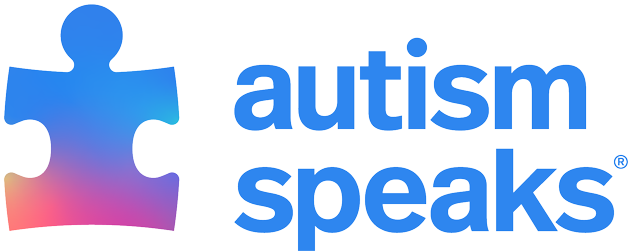Search
Social skills and autism… Many children and adults on the autism spectrum need help in learning how to act in different types of social situations. They often have … to be part of the community. What are social skills? Social skills are the rules, customs, and abilities that guide our interactions with other people and the world around us. In general, people tend to “pick up” social skills in the same way … instruction and "teachable moments" with practice in realistic settings Focus on timing and attention Support for enhancing communication and sensory integration Learning behaviors that predict important social outcomes like friendship and …
A hopeful future for an overlooked group of the autistic community… Dr. Nathan Call, a researcher at the Marcus Autism Center and member of Autism Speaks’ Autism Care Network (ACNet) , is dedicated to tackling some of the most complex and … the purpose the behavior serves for them. Our research has contributed to the mounting evidence that alternative means of communication can provide autistic people with new skills and coping strategies that help them better express their needs … to be alone for a moment. In response, we taught him to request privacy and helped him understand that sometimes brief interactions with others are necessary. As a result of the intervention, the time he chose to spend with others gradually …
Autism and gender identity… of Pediatrics at The Ohio State University College of Medicine, chief of psychology at Nationwide Children’s Hospital and director of Nationwide Children’s Hospital’s Child Development Center. I suspect my child with autism may be … experiences. They expressed some unique challenges being transgender and having autism. For some, executive functioning, communication challenges and social challenges can make it harder for them to advocate for their needs. This can mean at … gender identity. But, the teens in this study pointed out some upsides. Some who said they typically have limited social interactions said this helped them feel more protected from negative attitudes about gender identity. Relating to other …
Teaching nonverbal autistic children to talk… by Autism Speaks's first chief science officer, Geri Dawson, who is now director of the Duke University Center for Autism and Brain Development; and clinical psychologist Lauren Elder. Researchers published the hopeful findings that, even after … that promote social interaction. Examples include singing, reciting nursery rhymes and gentle roughhousing. During your interactions, position yourself in front of your child and close to eye level – so it’s easier for your child to see and … you roll a car. If he or she crashes the car, you crash yours too. But don’t imitate throwing the car! Focus on nonverbal communication. Gestures and eye contact can build a foundation for language. Encourage your child by modeling and responding …
Applied Behavior Analysis (ABA)… What is Applied Behavior Analysis? Applied Behavior Analysis (ABA) is a therapy based on the science of learning and behavior. Behavior analysis helps us to understand: How behavior works How behavior is affected by the environment How … helpful and decrease behaviors that are harmful or affect learning. ABA therapy programs can help: Increase language and communication skills Improve attention, focus, social skills, memory, and academics Decrease problem behaviors The methods … reinforcement for demonstrating useful skills and socially appropriate behaviors. The emphasis is on positive social interactions and enjoyable learning. The learner receives no reinforcement for behaviors that pose harm or prevent learning. …
Autism and Bipolar disorder… This week’s “Got Questions?” answer comes from psychiatrist Jessica Hellings, MD, and psychologist Andrea Witwer, PhD, program directors at Ohio State University’s Nisonger Center, which is part of Autism … and bed wetting, shaky hands and even life-threatening toxicity. This is of particular concern with individuals who have communication difficulties, as they may not be able to alert caregivers to the side effects they’re experiencing. Studies … disorders. Early results suggest that this type of intervention decreases mood severity in children, while improving family interactions and access to appropriate healthcare. If you or your child has autism and you’re concerned that it may be …
Autism and driving: Ways to identify as autistic when driving… Identifying as autistic when driving Any driver who has been pulled over by the police understands the anxiety involved in that entire situation. But for autistic drivers, these interactions can be especially nerve-wracking. Communication differences can become more difficult due to the stressful situation. Stims and other coping mechanisms, body …
ABA and other therapies… community about Applied Behavior Analysis (ABA). We know that each person’s experience with autism is uniquely individual and personal, including the resources and supports they may need. Some autistic people and their families say that ABA … on preventing self-stimulatory behavior (stims). Behavior analysts work with autistic people to improve skills like: Communication and language abilities Social skills Self-care and hygiene routines Play and leisure skills Motor abilities … BCBA. Inability to respond to concerns. Use of punishment instead of positive reinforcement. Aggressive or controlling interactions. Unwillingness to listen and stop when the client is overstimulated. Lack of data showing progress. Offering …
Navigating sex education and reproductive care: A guide for parents and caregivers … Talking about sex, puberty and reproductive health with your child can feel awkward—but it’s a crucial part of helping them grow into a confident, … University. “First, they may find the office where they would go to receive contraception inaccessible because of health communication that is jargony or hard to understand, physical spaces that trigger sensory sensitivities or transportation … If they’re nervous, help them practice how they will ask questions or request accommodations. Role-playing these interactions in advance can make the experience feel less intimidating. Remind your child that it’s okay to feel nervous …
